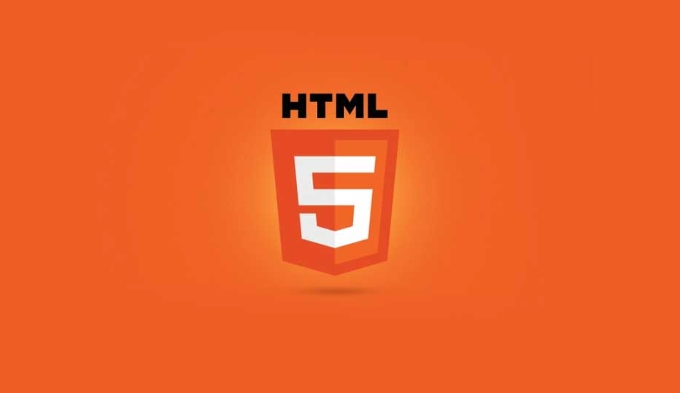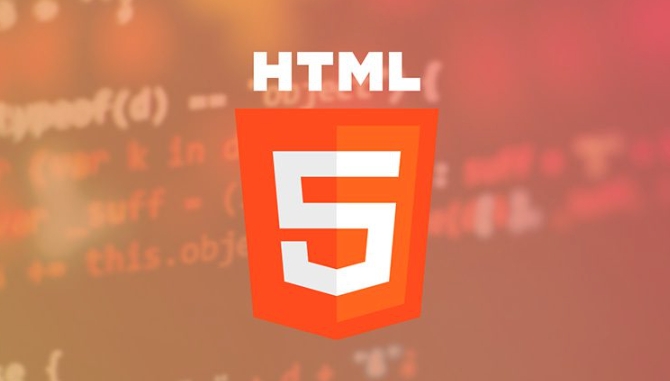Creating autocomplete dropdowns with the HTML5 datalist element.
Jul 02, 2025 pm 04:38 PMThe key to creating an autocomplete drop-down box using HTML5's datalist element is to correctly associate <input> and <datalist>. 1. The basic structure is: set the list attribute for <input> and match the id of <datalist>; 2. The supported input types include text, search, number, range, date, etc., but non-text types may have poor compatibility on the mobile side; 3. The options can be dynamically populated through JavaScript, but performance optimization needs to be paid attention to; 4. Mainstream browsers have good support, and old devices can consider polyfill or custom solutions instead.

Creating an automatic completion drop-down box with HTML5 datalist elements is actually quite simple, and it doesn't require writing too much JavaScript. It can achieve suggestions like search box by binding <input> and <datalist></datalist> . The key is correct structure and matching attributes.

How to write the basic structure?
To use datalist , you need a <input> element and a <datalist></datalist> , and then associate them with list attribute.

<input type="text" list="fruits" /> <datalist id="fruits"> <option value="Apple"></option> <option value="Banana"></option> <option value="Cherry"></option> <option value="Orange"></option> </datalist>
-
listattribute value on<input>must be consistent withidof<datalist>. -
valueof each<option>is the suggestion item that the user can choose. - No additional scripts are required, browser native support.
What input types are supported?
<datalist> can be used with a variety of <input> types, common including:
-
text -
search -
number -
range -
date
For example, if you want the user to choose a year, you can write it like this:

<input type="number" list="years" /> <datalist id="years"> <option>2020</option> <option>2021</option> <option>2022</option> <option>2023</option> </datalist>
Note: Some browsers may have slightly less compatibility with non-text types, especially on mobile.
How to load options dynamically? (Simple method)
Although datalist itself does not provide the ability to remotely load data, you can dynamically populate the content of <datalist> with JavaScript.
For example, suppose you have an array:
const fruits = ['Apple', 'Banana', 'Cherry', 'Orange'];
const dataList = document.getElementById('fruits');
fruits.forEach(fruit => {
const option = document.createElement('option');
option.value = fruit;
dataList.appendChild(option);
});This allows you to dynamically generate a list of suggestions based on user input or other conditions.
But be aware of:
- Don't load too much data at once, otherwise it will affect performance
- If the data volume is large, consider paging or fuzzy matching optimization
How about browser compatibility?
Mainstream modern browsers support datalist , including Chrome, Edge, Firefox and Safari. But there may be problems on some older versions or mobile devices.
If you find that pull-down suggestions are not displayed on some devices, you can consider:
- Use polyfill library simulation function
- Fall back to a custom autocomplete component (for example, implement it with input ul)
However, for most projects, directly using datalist is enough, especially suitable for quickly implementing basic functions.
Basically that's it. With a clear structure and good attribute correspondence, you can quickly create an available automatic completion drop-down box.
The above is the detailed content of Creating autocomplete dropdowns with the HTML5 datalist element.. For more information, please follow other related articles on the PHP Chinese website!

Hot AI Tools

Undress AI Tool
Undress images for free

Undresser.AI Undress
AI-powered app for creating realistic nude photos

AI Clothes Remover
Online AI tool for removing clothes from photos.

Clothoff.io
AI clothes remover

Video Face Swap
Swap faces in any video effortlessly with our completely free AI face swap tool!

Hot Article

Hot Tools

Notepad++7.3.1
Easy-to-use and free code editor

SublimeText3 Chinese version
Chinese version, very easy to use

Zend Studio 13.0.1
Powerful PHP integrated development environment

Dreamweaver CS6
Visual web development tools

SublimeText3 Mac version
God-level code editing software (SublimeText3)

Hot Topics
 What is Microdata? HTML5 Explained
Jun 10, 2025 am 12:09 AM
What is Microdata? HTML5 Explained
Jun 10, 2025 am 12:09 AM
MicrodataenhancesSEOandcontentdisplayinsearchresultsbyembeddingstructureddataintoHTML.1)Useitemscope,itemtype,anditempropattributestoaddsemanticmeaning.2)ApplyMicrodatatokeycontentlikebooksorproductsforrichsnippets.3)BalanceusagetoavoidclutteringHTML
 Microdata in HTML5: The Key to Better Search Engine Ranking
Jun 12, 2025 am 10:22 AM
Microdata in HTML5: The Key to Better Search Engine Ranking
Jun 12, 2025 am 10:22 AM
MicrodatasignificantlyimprovesSEObyenhancingsearchengineunderstandingandrankingofwebpages.1)ItaddssemanticmeaningtoHTML,aidingbetterindexing.2)Itenablesrichsnippets,increasingclick-throughrates.3)UsecorrectSchema.orgvocabularyandkeepitupdated.4)Valid
 Handling reconnections and errors with HTML5 Server-Sent Events.
Jul 03, 2025 am 02:28 AM
Handling reconnections and errors with HTML5 Server-Sent Events.
Jul 03, 2025 am 02:28 AM
When using HTML5SSE, the methods to deal with reconnection and errors include: 1. Understand the default reconnection mechanism. EventSource retrys 3 seconds after the connection is interrupted by default. You can customize the interval through the retry field; 2. Listen to the error event to deal with connection failure or parsing errors, distinguish error types and execute corresponding logic, such as network problems relying on automatic reconnection, server errors manually delay reconnection, and authentication failure refresh token; 3. Actively control the reconnection logic, such as manually closing and rebuilding the connection, setting the maximum number of retry times, combining navigator.onLine to judge network status to optimize the retry strategy. These measures can improve application stability and user experience.
 What are the key features introduced in HTML5?
Jun 19, 2025 pm 11:57 PM
What are the key features introduced in HTML5?
Jun 19, 2025 pm 11:57 PM
HTML5introducedkeyfeaturesthattransformedwebdevelopment.1.Semanticelementslike,,andimprovedstructure,readability,andaccessibility.2.Nativemultimediasupportviaandtagseliminatedrelianceonplugins.3.Enhancedformcontrolsincludingtype="email"andr
 HTML5 Input types: does it improve accessibility?
Jun 20, 2025 am 12:49 AM
HTML5 Input types: does it improve accessibility?
Jun 20, 2025 am 12:49 AM
Yes,HTML5inputtypesimproveaccessibilitybyprovidingsemanticmeaningtoassistivetechnologies.1)Emailinputtypeoptimizeskeyboarddisplayandscreenreaderannouncements.2)Dateinputtypeoffersacalendarwidget,aidinguserswithmotordisabilitiesandensuringconsistentda
 Integrating CSS and JavaScript effectively with HTML5 structure.
Jul 12, 2025 am 03:01 AM
Integrating CSS and JavaScript effectively with HTML5 structure.
Jul 12, 2025 am 03:01 AM
HTML5, CSS and JavaScript should be efficiently combined with semantic tags, reasonable loading order and decoupling design. 1. Use HTML5 semantic tags, such as improving structural clarity and maintainability, which is conducive to SEO and barrier-free access; 2. CSS should be placed in, use external files and split by module to avoid inline styles and delayed loading problems; 3. JavaScript is recommended to be introduced in front, and use defer or async to load asynchronously to avoid blocking rendering; 4. Reduce strong dependence between the three, drive behavior through data-* attributes and class name control status, and improve collaboration efficiency through unified naming specifications. These methods can effectively optimize page performance and collaborate with teams.
 How to control HTML5 video and audio playback using JavaScript?
Jun 24, 2025 am 12:38 AM
How to control HTML5 video and audio playback using JavaScript?
Jun 24, 2025 am 12:38 AM
To control HTML5 video and audio playback using JavaScript, master the following key operations to achieve basic control. 1. Start or pause play can be achieved through the .play() and .pause() methods, and it is recommended to trigger through user interaction to be compatible with mobile browsers; 2. Control the volume and set the value from 0 to 1 through the volume attribute, and switch by setting the muted attribute to true or false; 3. Jump to a specific time to play, you can use the currentTime attribute, which supports direct assignment or increase or decrease the current time, and it is recommended to add error handling; 4. Listen to the playback status changes can be achieved through events such as play, pause, ended and timeupdate.
 Receiving real-time data with HTML5 Server-Sent Events (SSE).
Jul 02, 2025 pm 04:46 PM
Receiving real-time data with HTML5 Server-Sent Events (SSE).
Jul 02, 2025 pm 04:46 PM
Server-SentEvents (SSE) is a lightweight solution provided by HTML5 to push real-time updates to the browser. It realizes one-way communication through long HTTP connections, which is suitable for stock market, notifications and other scenarios. Create EventSource instance and listen for messages when using: consteventSource=newEventSource('/stream'); eventSource.onmessage=function(event){console.log('Received message:',event.data);}; The server needs to set Content-Type to text/event






